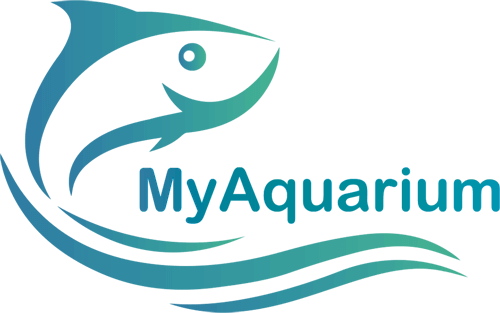There is a good variety of aquarium plants available on the pet stores. In this article we will list the best freshwater aquarium plants for beginners in Fishkeeping.
The Hobbyists tend to be overwhelmed by the amount of information available on the internet about the aquarium plants. However, they are unable to choose the right plants to start in that world.
Stem, carpet, epiphyte, floating, high-tech and low-tech plants. There are a multitude of categories and each of them has specific needs for correct planting and care.
For the beginners, it’s best to start with the basics. Here are the best aquarium plants that are ideal for beginners:
Anubia barteri (Anubias barteri var. Nana)

Anubia barteri is, without a doubt, the main aquarium plant for beginners. Its lighting requirements are minimal, and it adapts to a wide variety of water parameters and requires no substrate.
So it’s a great option for those who keep a small or no amount of substrate (gravel) in the fish tank. You can tie your rhizome (the base of the plant’s horizontal growth) to a stone or trunk on the substrate. This is more than enough to keep them in the aquarium.
As long as you have some kind of lighting in your tank – enough so that you can comfortably watch your fish – you will be able to grow it.
It is a slow growing plant, so if you want to quickly fill an tank with this species, you will have to invest a little more.
See Also:
Anubia barteri has a wide variety of shapes, colors and sizes. Of the species A. barteri var. nana ‘Petite’, with leaves the size of nails, for the extensive A. barteri var. caladiifolia, which can produce palm-sized leaves.
Microsorum (Microsorum pteropus)

Microsorum pteropus, sometimes called Java Fern, is very similar to anubias in its care. Rhizomes must remain above the substrate and can be tied to rocks or trunks.
Your anchor roots will attach to these objects. They are plants that thrive in low light, and most standard daylight bulbs, fluorescent or LED, are enough to make them grow.
M. pteropus also adapts to a wide water range parameters. Most plants prefer soft, slightly acidic water, and the Java fern likes that, but it also thrives in brackish waters.
Wild-type Java ferns have lance-shaped leaves (spear-shaped), but there are a few other varieties on the pet stores. The ‘Trident’ species is known for its bifurcated leaf shape. The ‘Narrow’ variety has longer, thinner leaves.
Cryptocoryne wendtii

Unlike the two plants mentioned earlier, Cryptocoryne wendtii (affectionately called “crypt” in the hobby) requires substrate.
Crypts perform most of their food from their roots, unlike stem plants, which generally extract nutrients from the water column through their leaves. In addition to ample nutrients in their roots, crypts are adaptable to most water parameters.
They even accept very cold waters, which is a little unusual for a tropical plant – the crypts come from the Southeast Asia jungles. They need a little better lighting than Java and Anubias ferns, but they still don’t need much light to thrive.
See Also:
C. wendtii also has different shapes and colors. Some are more or less what their names say, for example, C. wendtii ‘Bronze’ or C. wendtii ‘Red’. Others have slightly more exotic names, like ‘Flamingo’ (salmon pink color), ‘Florida Sunset’ (variety with pink, green and bronze) and ‘Green Gecko’ (light green with brown spots).
Java Moss (Taxiphyllum barbieri)

Indonesia is a kind of pole for aquarium plants that do not need much light. There is a reason for this – in the dense jungle, little light hits the ground through the canopy, so if you are an aquatic plant, you better get used to these conditions.
Java moss, or Taxiphyllum Barbieri, is another one of those plants that just grow, as long as you add a little water and put a little light on it.
Because of this, it has become one of the ideal aquarium plants for beginners and fish breeders, because as it sinks, some fish species usually spread their eggs on the plant to protect them from possible predators in aquariums.
Again, the parameters are very flexible. It can be grown freely in groups, but for better aesthetics, use a hair net or some fishing line to wrap it around. Ideally, it should be stuck on a trunk piece or rock, where it will attach and give the hardscape a natural look.
Ludwigia repens (Ludwigia repens “Rubi”)

For the variety sake, we include a stem-type plant. And among the myriad of stem plants in the hobby, our favorite for this application type where we need low light and low technology goes to L. repens.
But why this one in particular?
Well, on the one hand, the color. While producing its most intense reds in brighter settings, it will reliably color even in a low-tech tank. For planting, only a few centimeters of its stem should be carefully buried in the substrate.
See Also:
When exposed to intense light, it will have a blood red color. Ideally, it should be planted in the middle and bottom of the aquarium.
We hope that this article about the best aquarium plants for beginners in Fishkeeping will serve as a starting point for you looking for some easy to grow plants to put in your fish tanks. Try adding the simplest species to maintain so you can get an idea of the needs of each.
In the future, you will probably move to rarer plants and purchase more advanced items for growing these new species.





3 Comments
Pingback: Neon Blue Rasbora (Sundadanio axelrodi) - MyAquarium
Pingback: Redline Apistogramma (Apistogramma hongsloi) - MyAquarium
Pingback: Empire Gudgeon (Hypseleotris compressa) - MyAquarium